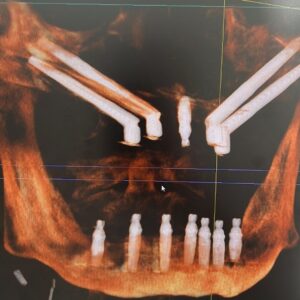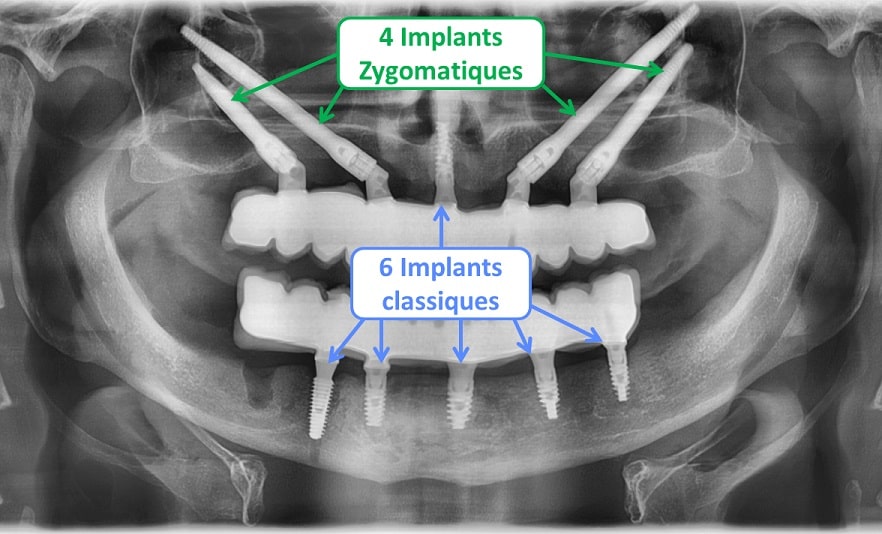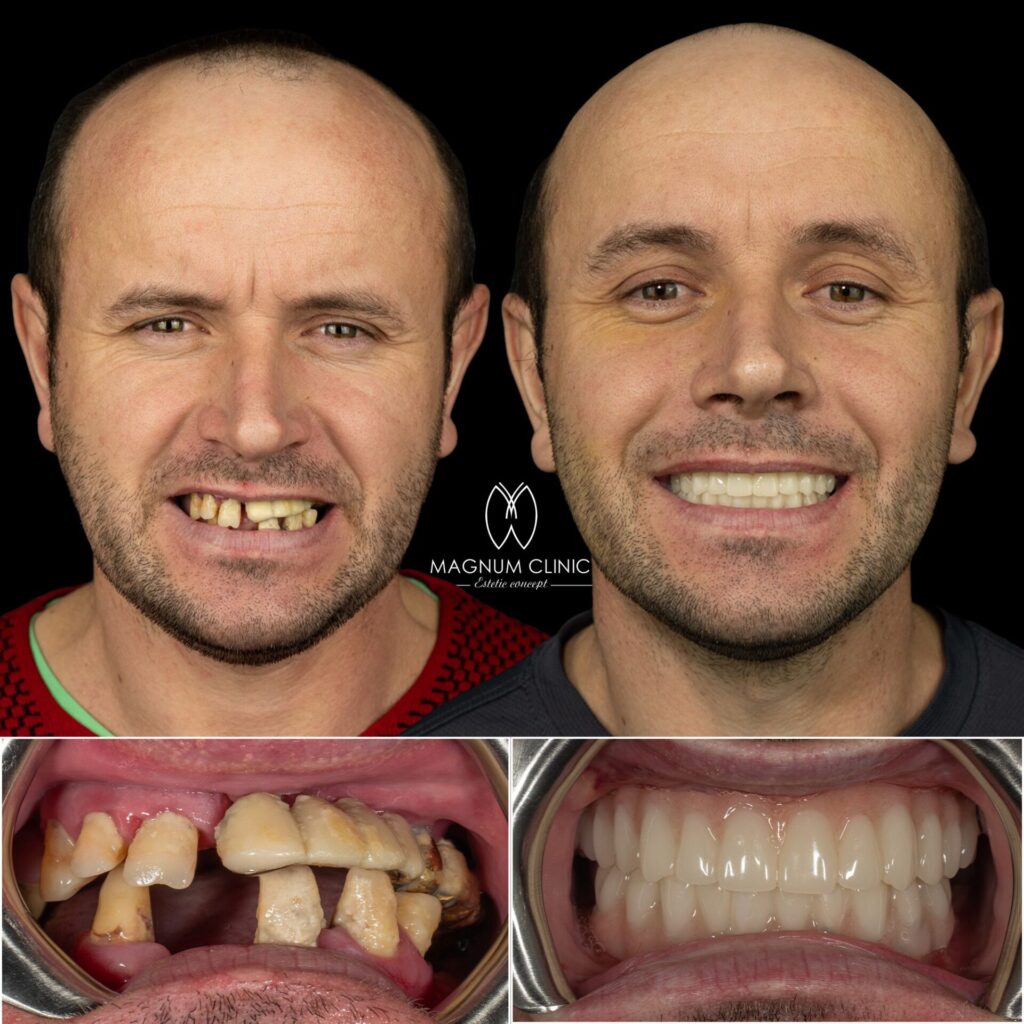
Zygomatic Implants
The zygomatic implant is longer than the classic and basal dental implant and it fits into the bone called zygomatic (cheekbones).
The Zygomatic implant is the dental implant solution to be used in the most severe cases of missing bone and for complete dental reconstruction of the jaw.
Zygomatic implants

A Zygomatic Implant is a type of titanium dental implant of particular shape and size. The zygomatic implant is longer than the conventional implant and it therefore fits deeper into the jaw bone, or even into other bones such as the zygomatic implant which is inserted into the zygomatic bone (cheek bones).
Zygomatic implantology is one of the implant solutions to be used in the most severe cases of missing bone. However, we will also see that other techniques should be considered before zygomatic implantology, which should only be used as a last resort and in very specific cases.
It is only after evaluating the risks of the different possible solutions that the surgeon will choose the type of basal implantology to perform.
Points to remember!
No Bone Graft Needed: The zygomatic implant is placed in the zygoma bone / cheekbone bone that does not suffer from atrophy
Immediate implantation: The loading is necessarily immediate
Success rate close to 100%: Thanks to its smooth surface, cases of peri-implantitis (rejection) are extremely rare on this type of dental implant
Micro-invasive: Bone drilling is extremely fine and does not damage bone tissue.
Zygomatic implantology
The zygomatic implant is a long, angled implant intended to be screwed into the zygomatic bone (at the level of the cheekbones). It is therefore only used on the upper jaw. This type of implant is a valid alternative for people with a very low sinus floor in order to avoid massive bone grafts in the sinus. This removes the need for bone filling of the sinus (sinus elevation or sinus lift).

Provided you have a significant bone problem, this technique is one that our surgeons recommend. This avoids bone grafting, as well as having fixed but temporary teeth directly on the implants.
This option with temporary fixed teeth is much more comfortable than wearing removable dentures. The temporary teeth are replaced by permanent teeth in metal-ceramic or Zirconia-Ceramic 4 to 6 months after the first intervention. This healing period allows the gums to stabilize after surgery.
Benefits of the Zygomatic Implants
Avoid bone grafting
The great advantage of the zygomatic implant is to avoid heavy bone grafting.
People with chronic sinusitis can benefit from this technique so as not to risk complications.
Sometimes a bone graft requires the removal of autogenous bone, that is to say: from another bone of the same patient. This type of procedure has additional risks associated with this additional surgery. This also has a generally significant cost.
Time saving
This second advantage is a consequence of the first.
When a patient receives a large bone graft, it is not possible to place the implants during the same procedure. It is then necessary to wait at least 6 months for the graft to take before placing the implants. Then the period of osseointegration of the implants lasts another 6 months before being able to place the definitive prostheses. The total duration is then more than 12 months.
Strong initial stability
The third advantage is the initial stability of the zygomatic implant. This is so deep that it very easily allows the immediate placement of a fixed prosthesis directly a few days after surgery.

Immediate but temporary fixed prosthesis
A fixed implant prosthesis placed immediately (a few days) after surgery should always be temporary. A permanent prosthesis should not be placed directly. The gums are swollen and will deflate in the following weeks.
By deflating, the gums leave an empty space between the teeth and the gum. It is therefore necessary to wait 4 to 6 months after the surgery for the gums to deflate and stabilize. Then a new dental impression which is used to create the definitive dental prosthesis (crown or bridge).
This applies just as much to conventional implants as to the zygomatic implant. As well as for cases of implant placement directly after extraction, such as the case where the patient has already waited 3 months after the extraction to place their implants.
Zygomatic implantology price
Zygomatic implant treatment costs between 12,000 and 15,000 euros for the full mouth. The price depends mainly on the final material of the teeth (Ceramic or Zirconia).
These prices are the prices I found abroad where my father went for treatment. Contact me for more information.
Placing a zygomatic implant requires specific skills. A maxillofacial surgeon must perform the procedure.
This work is carried out in 2 stages of 8-10 days, with an interval of 4-6 months during which the patient wears his temporary fixed teeth before returning for the permanent teeth.
Dental implants testimonial: Zygomatic




